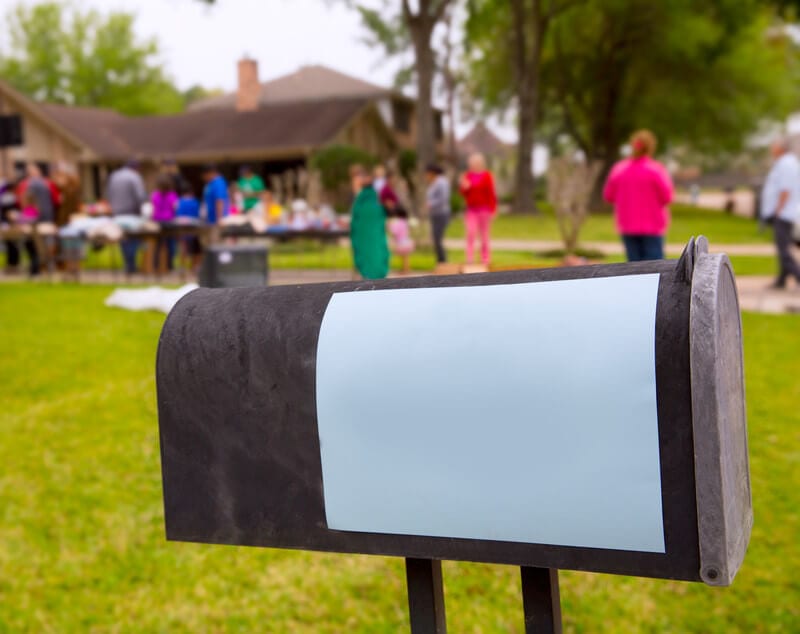So, you are about to start your house relocation and there is much for you to think about. When it comes to moving, everyone thinks about how to reduce costs.
While hiring a cost-effective trusted long-distance mover will go a long way, reducing the volume of stuff you are moving is also an option. Hence, downsizing comes to mind.
There can be a lot of other reasons to downsize. People mostly do it so they can free up finances, choose to get a roommate, they can’t alone manage the size of property they are currently in, and so on.
The reason is not important, but if you are moving from a large home to a smaller home, you will have to make some decisions. Moving is the best time to convert chaos into cash with a garage or yard sale.
Throwing a moving sale can be a huge amount of work, but the rewards are worthwhile. When you relocate to your new home with additional money in your pocket and fewer household goods to unpack, you will greatly appreciate you did it.
Before starting your garage sale process, you importantly need to conduct some research. To assist you, we’ve come up with our best tips for turning garage sale into a breeze.
One Month before the Garage Sale
- Pick a date: When you are set to release some of your belongings, select a date for the yard sale one or two months out. The rule is to choose a weekend (the best is on Saturday morning). People will not be at work and therefore, more chanced to visit a nearby yard sale. Ensure you also pick a date that is best for your friends and family, so they can also be there to help out. Select a backup date too, just in case the weather was not friendly to you.
- Check the rules of your community: People who reside in a community with the Homeowners’ Association (HOA) will need to look into the rules and restrictions before starting a garage sale. For example, a lot of apartment and condo communities are against the selling of goods and property by residents
- Read your local regulations: Before you host a yard or garage sale, confirm the laws and regulations of your city as regards possible permits required. Also, check whether you will be required to get income and sales tax during the yard sale.
- Find out where you can display your tables: During a garage sale, you need to display your items. For example, if you are selling smaller items like coffee table books and picture frames, remember that these could be easily overlooked by customers. To ensure your belongings as nicely placed and presentable, ask your family and friends if they can lend you their picnic tables, clothing racks, boxes, bookshelves, carts, and hangers for the day.
- Decide the items you are selling: Check your home and determine the actual items you want to sell. You can easily monitor everything by writing out and keeping a continuous inventory list.
How Do You Determine If You Should Sell Or Keep It?
While taking a record of your items before moving, you may be faced with the challenges of choosing whether to sell before the move and likely buy again and the items you should keep. For those items you couldn’t decide on, ask these questions to guide your decision.
- Does it work well? If yes, proceed to the next question. If no, find out whether you could sell it. For instance, you can still get market for a laptop with a damaged battery online, even if there is not much utility in your daily living.
- Is moving it cost-efficient? If packing and transporting it will cost you more than to replace it, sell it.
- Do you use it? There is no need to keep items just because you like them. If you don’t use the item and have no immediate plans to use it, let it go.
- Does it hold sentimental value? Surely, some things are not working, are costly to move, and you don’t use them, but you still can’t let go of them due to their sentimental value. Endeavor to restrict the number of belongings that you keep for just sentimental reasons, but do not sell items just to sell if you don’t plan on doing so.
One or Two Weeks before the Yard or Garage Sale
- Determine prices: Around one week in advance of your garage sale, check your inventory list and figure out the starting price for all items. It is also nice to gather items together, like books, and sell them for the same amount. For example, keep the books in one box with a label that reads “$2 for each book”. Remember that shoppers will be making cash payments, so ensure that you have a simple pricing system.
If you decide to not attach price stickers on each, having a general idea of their cost may be helpful, at least. Make sure your prices are reasonable and flexible. If you own a highly valuable item, endeavor to consign or sell it online instead.
- Gather price stickers and paste them on each item: If you choose to make use of price stickers, you can get them at your local stores or on Amazon.com.
- Advertise: If you fail to advertise your yard sale, you can be certain that mostly no one will come. So, one week in advance of your garage sale, begin to advertise on your entire online neighborhood, listservs, such a Nextdoor.com, your local Facebook community groups, and local Craigslist. Allow as many people as possible to be informed about your sale. Endeavor to place flyers on neighbors’ doors and keeping signs at the end of your street containing the date of your yard sale.
- Prepare your items: One week or two before the yard sale, it is therefore important to get all your items ready properly for resale. Know that nobody wants to purchase a wrinkled old t-shirt. So, make an extra effort to wash and iron your clothes, wipe down furniture, and dust of books, so that your belongings will receive the attention they deserve.
The Day before Your Yard/Garage Sale
- Have small cash on hand: You will surely need a lot of change at your garage sale. So, be sure to make a stop at your nearest ATM on the way home from work on the night before your big sale day. It is better to have small bills like $1s, $5s, $10s, and $20s on hand.
- Choose how you will set up everything: The day before your yard sale is when you have to decide on where your display tables, furniture, clothing racks, and other items will be positioned. Ensure you place attractive items upfront to draw the attention of passersby or those driving by. Make sure you keep things well arranged and neat. Shoppers don’t want to attend an unclean and untidy sales environment.
- Get supplies: If you schedule to pick up boxes or tables from people around you, this is the time to do it. Having to search everywhere for supplies on the morning of the yard sales is not the best idea.
The Day of the Yard/Garage Sale
- Set it up: Firstly, begin to set up your garage sales immediately you are up from bed. The earlier you start your garage sale, the better.
- Place signs across your street: Immediately everything is set and you are ready to start, place a sign at the junction of your street that advertises the yard sale. To catch people’s attention, try to attach balloons to the signs too.
- Have shopping bags with you: It is best to make a few shopping bags available (grocery bags or used shopping bags) with you, just in case some people buy many knickknacks. We also suggest that you have a few cardboard boxes available for people who buy heavier or delicate belongings, like vases, books, and kitchen items.
- Be friendly: If you are a friendly and welcoming person, people will possibly like to stay around and check your items. A smile can make a huge difference in keeping people interested in your items. After all, no one wants to purchase used stuff from someone they don’t get along with.
- Make pricing flexible: If a shopper is trying to negotiate the price of a book down a certain dollar amount, don’t stress much on it. Immediately you can have a clutter-free home, you will not miss that book at all.
- Avoid getting too attached to your items at the final minute: Don’t forget, you are releasing these items for a reason. The last thing you ever want to do is show too much sentiment to your items. Shoppers see your items with a blank mindset, so endeavor to keep it that way by not launching into stories of the things you put on display.
- Find out what to do with the remaining items you own: Immediately you are done with the yard/garage sale, you will have to determine what to do with the rest of your items not sold. If the item is really valuable, we recommend that you consign it or resell it on online forums, such as eBay or Craigslist. You also can donate belongings to Habitat for Humanity, Goodwill, or The Salvation Army.
Where to Sell Your Belongings
You probably won’t sell off all the items you put on display, but you definitely can get return on many of them. Try online marketplaces, such as eBay, which enable you to post items for sale and hook up with potential buyers.
You also can visit physical second-hand and consignment stores in your local area and find out what they would like to take. For the rest, organize a pre-move yard sale and try to release them.
What Happens to the Items You Can’t Sell?
If you would prefer not to sell it, and you don’t have any luck selling the item, your last play is to consider a donation. Some charities will pick your goods up for you, except there are a host of other options for donating items you don’t want to people who could put them the better use.
FINAL WORDS
That is it for now. You now have the right information you need to make sure your garage sale is successful and fun-filled even as you get rid of the items you don’t want to move with you. Just consider all the fun things you can do with the additional money, as well.
From making adventurous trips during your move to investing in beautifying your new place than the last, you will always enjoy having that garage sale when you are determining ways to spend that cash.



